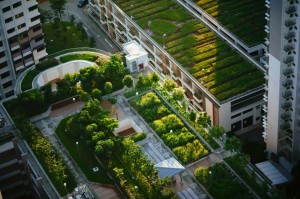The coming Future Homes Standard will have a big impact on new homes, challenging the construction industry to build better. There will be some strict requirements, including reducing carbon emissions, improving fabric efficiency, ensuring homes are airtight, and ensuring energy efficiency. Sustainability will be a major focal point. What we want to do is look at three different ways you can measure it to determine if your design meets the highest standards. Then, if you want help from an architect in London, we are here for you.
Whole life carbon emissions
 Firstly, you should do a holistic carbon assessment of the development. This is much better for sustainability than focusing on reducing operational carbon. It extends the evaluation to include the embodied emissions, operational emissions, and end of life emissions. Doing this can have a massive impact on sustainability.
Firstly, you should do a holistic carbon assessment of the development. This is much better for sustainability than focusing on reducing operational carbon. It extends the evaluation to include the embodied emissions, operational emissions, and end of life emissions. Doing this can have a massive impact on sustainability.
There are a number of stages to look at when you do a whole life carbon assessment. First is the A phase, referring to upfront carbon. It starts with the product stage (A1-A3), exploring all of the emissions produced to deliver the raw materials and other products. Next we have transport (A4), an evaluation of the gate to site process of delivering everything. Thirdly, we have the construction itself (A5), including emissions from equipment and waste.
Secondly, we need to look at the B phase, encompassing the use stage and operational emissions from a property. You need to do a full assessment of energy and water use, ensuring the property is as efficient as possible. Plus, you must factor in emissions from maintenance and repairs.
Finally, we have the C phase, looking at the end of life of a property. There can be significant emissions here due to activities like demolition and disposing of waste. It is vital to assess it and take steps to maximise sustainability. If you want some help, speak to us and work with a top architect in London.
BNG
Another metric you can use to calculate the sustainability of a project is biodiversity net gain. It challenges developers to ensure that their projects have a positive impact, producing a site that is more diverse than it was to begin with. If you’re doing a project in England, BNG is actually mandatory and there must be a 10% increase at least.
To achieve BNG goals, you need to do a number of things. Firstly, you need to look at the current site and calculate the biodiversity value. Then, you can look at different ways to increase it, including creating green infrastructure, nature and conservation areas, and improving river basins. Finally, you must maintain any habitats for at least 30 years.
UGF
The third metric applies specifically for projects in London. It is part of the planning guidance for the city. What you need to know is the Urban Greening Factor ensures all major developments must make greening a “fundamental element” of designs. This is vital for sustainability.
There is a helpful UGF calculator so you can explore the different types of greening you can do on a site. It includes vegetation, wetland, green roofs or walls, rain gardens, planting, hedges, grassland, and more. You also need to consider sealed surfaces, including concrete and paving. Ultimately, you should have a clear idea of the quality and quantity of greening on the site.
Get advice from a top architect in London
Coffey Architects can achieve wonderful things in the realm of sustainability. We can design properties with a small whole life carbon footprint. Most importantly, we can look at the layout, green features and tech, construction techniques, recyclability, and greening. The goal is always to produce properties that will last a long time and benefit the environment where possible.
So, contact us if you want to create a sustainable development with a top architect in London. Whether it is a home or housing, a commercial development, or a public building or infrastructure, we’d love to help you.
